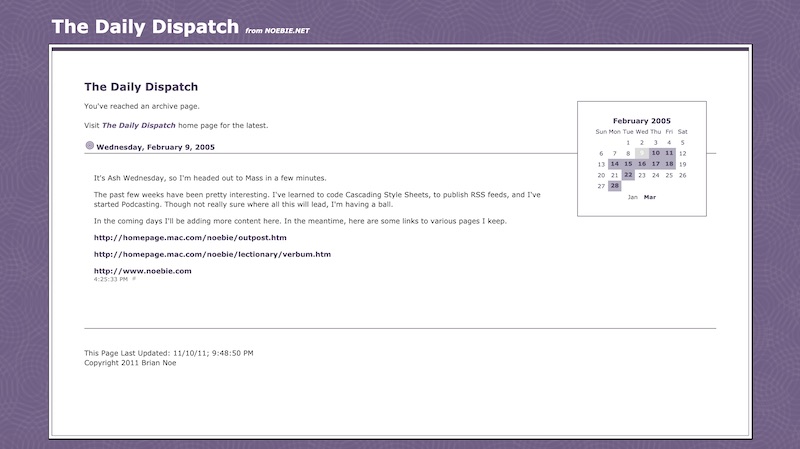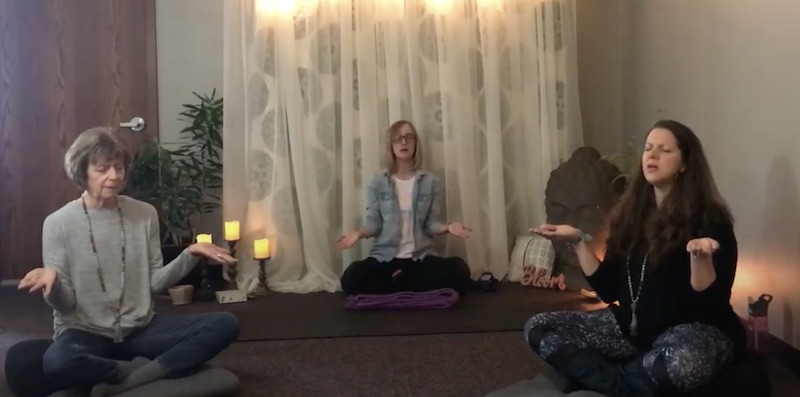I cannot explain it. You’ll just have to watch.
Public Safety Alternatives
 Public Safety Without Police – Chicago Alderwoman Rossana Rodriguez Sanchez speaks with Rampant Magazine’s Brian Bean about her efforts to reprogram $150 million in funding from the Chicago Police Department to an alternative Chicago Crisis Response and Care System.
Public Safety Without Police – Chicago Alderwoman Rossana Rodriguez Sanchez speaks with Rampant Magazine’s Brian Bean about her efforts to reprogram $150 million in funding from the Chicago Police Department to an alternative Chicago Crisis Response and Care System.
The CPD’s annual budget is $1.8 billion, so this shift would represent less than 10% of the city’s current police funding.
For those who consider calls for “defunding the police” ludicrous, as if major city police departments would cease to exist altogether, I would urge you to read the interview with an open mind, and try to envision how a relatively subtle shift in the way public safety funds are used might improve our lives and communities.
https://rampantmag.com/2020/10/13/public-safety-without-police/
Taking Stock

This weblog began on February 9th of 2005. At the time, it was on the Radio Userland platform under Salon.com’s hosting. At some point I moved it to a self-hosted site with the same platform, but eventually functionality began to deprecate, and I found myself moving to WordPress on November 11th of 2011.
In the early years of this website, blogging was fairly new. Podcasting was just beginning. I remember being thankful and excited for the opportunity to write and create, and to publish my creations for the world to view. It was really through this vehicle, The Daily Dispatch, that I found myself, my voice and my tribe.
My tendency in those early days was to use Userland’s built in news aggregator to track dozens (or maybe hundreds) of RSS feeds to find things of interest to share, along with my comments. I would also write some longer form content of my own from time to time, but much of the time I was posting links and brief comments several times a day, in the same way that we do on Facebook and other social platforms now. The site lived up to its title back then.
Today, I migrated the last of my web properties (including this one) over to a new hosting provider. Sort of like when you move house, the process afforded an opportunity to take stock. I looked back over some of that content from the early days, and was able to get a sense of how the site has evolved over the years, both in terms of the types of content, and the topics upon which they centered.
My interests have changed a great deal over these 16 years, and I believe that I have grown and matured as a person. I find myself much less preoccupied with “the news” and the political landscape. It’s not that I consider what’s going on “out there” less relevant, but I find it much more difficult to see a way forward involving political work as we currently do it. In any case, that sort of thing is no longer my passion. For better or worse, there seems to be plenty enough passion to go around on that front elsewhere anyway.
Thankfully, there are a number of other things about which I do remain passionate, and I am excited at the prospects of sharing them.
In the weeks to come, I hope to give more attention to this site, posting items and links of interest along with short comments about them as I used to do. I also plan to add more poetry and occasional essays that don’t fit well with my other (now rather extensive list of) website projects.
I may also begin to create some audio podcast episodes again at some point, and if that is the case, I’ll likely use this site for shownotes, links and related content.
So, drop by when you can, or add the site to your RSS newsreader aggie if you still have one. I will not promise that the dispatches will be daily, but I hope that they will at least be more frequent.
Contingency
he said
“i’m not litigious”
and kept a straight face
and so i felt a little bad
choking back a chortle
“when people are injured
they deserve compensation”
simple as that
fairness
justice
and a one-third contingency
Here’s What Happened
frankly
it’s none of your god-damned business
and it was a long time ago
but if you must know
i could no longer endure
the sight of her
nor the sound of one more lazy
ignorant
word
i cried for help
and she slept right through it
when it was time to wake up
Chanting the Names
 I began chanting the Sadaksara occasionally from the time I first obtained a Tibetan mala many years ago. Over the past year, as I took up the daily practice of meditation, I have alternated between it and the Adi Mantra (which we learned from Chand Shiva Singh, our Kundalini Teacher).
I began chanting the Sadaksara occasionally from the time I first obtained a Tibetan mala many years ago. Over the past year, as I took up the daily practice of meditation, I have alternated between it and the Adi Mantra (which we learned from Chand Shiva Singh, our Kundalini Teacher).
As my wife, Claudia, began her daily practice, she first used the Kirtan Kriya and then the Siri Gaitri Mantra.
Although all of these mantras have deep spiritual significance, none of them invoke (or make reference to) particular deities.
Over the past few weeks, though, I have been learning about the rich devotional tradition of bhakti. Much of that practice centers on repeating the names of various Hindu gods and goddesses.
Raised, as I was, in an Evangelical Protestant Christian home, I was taught that this sort of activity is akin to devil worship. Even the reverence of Christian Saints practiced by Roman Catholics was considered to be idolatry in our church. When I became Catholic, it took considerable study and soul searching for me to overcome this knee-jerk aversion stemmed in my upbringing.
The Catechism of the Catholic Church says that an idolater is someone who “transfers his indestructible notion of God to anything other than God.” Most Catholics, I suspect, would take this to be a prohibition against reverence to any god with a name coming from a tradition other than that of Judaism and Christianity.
Here is what I have come to believe. Our notions about God, and our faith traditions, are limited by our human capacities. Although we Catholics believe that scripture is inspired, we must also accept that the human beings who wrote the scriptures experienced the same limits of language and culture that we ourselves face. We are all trying to understand and describe something that is far beyond our ability to comprehend and convey. We can have an experience of the divine, but we can only approximate that experience when we try to conceptualize or describe it.
All of the world’s major religions have something to add to our understanding of why we are all here, and how we ought to pursue our lives. For me, Christianity in general, and Roman Catholic Christianity in particular, do better on the whole in the tasks of informing my conscience and nourishing my spirit – but I did not become Catholic because I believe that our teachings reveal the “one and only truth.” I do believe that there is truth to be found in the teachings of the Catholic Church, and in the way that we worship and work together. But this does not mean that we cannot also be nourished by the practices, and guided by the wisdom, of other religious traditions.
One of the great lights of kirtan in our age, Krishna Das, says that the practice of bhakti is singing to the loving presence that is always present within us and around us. “This loving presence may be called by all these names.”
In recent days, I have found great nourishment and comfort in singing the names of Rama, Sita, Hanuman, Krishna, Radha, Durga, Shiva – the list goes on and on. These names, for me, represent aspects of God, not beings who are distinct from God. I believe that learning their stories and chanting their names is another way of bringing more light into my life, and more love into my heart. I suppose that greater compassion will be the ultimate test of whether or not this is true.
All One.
Diving in to Bhakti

About seven weeks ago, my wife and a couple of her yoga friends did a Facebook livestream from the Align Light studio where they shared the Siri Gaitri mantra. It was a beautiful meditation.
Unfortunately, after the live session, Facebook removed the sound, because they had used recorded music and the platform’s AI recognized it as copyrighted.
The idea struck me immediately that we could remediate the problem by recording the music ourselves. So I grabbed my handy recorder and guitar, played some arpeggios, then decided to add some keyboard sweetening. After a few hours I had the basic track together. We refined it over the next few days, adding some reference vocals and such. Done. It wasn’t what I would consider to be “listening” quality, but it was fine for the background to chanting.
It hadn’t occurred to me that this would be anything other than a fun, one-off project. But then my wife said “we should record Long Time Sun too.” So I got out the recorder and guitar again, and this time decided to add a bass guitar track in addition to guitar and keys. I had learned some things from the process for the first recording, and was noticing things during this second one that could be improved as well. Before I knew it, I found myself saying “the next one of these we do, I’ll want to start with a click track.”
By now I was absolutely hooked, and began searching all over the Web for anything I could learn about Kirtan music and devotional chanting. At this point I was still thinking of the music as a pleasant and interesting hobby or diversion. Then, something odd happened.
Although I already had a vague notion that the chanting had a spiritual basis and spiritual benefits (we chanted at the end of Kundalini Yoga sessions and our instructor always spoke about the deeper meaning of the chants), I hadn’t realized that it is at the very center of some folks’ devotional life. The practice already had a pretty firm grip on me, and now it pulled me in. It suddenly felt as if every thing that I have experienced throughout my life, from the time I was a small child, was leading to this moment of discovery.
Claudia and I continue to chant together every evening, and now I’ve added an afternoon session to my daily practice as well. I’ve also begun to read the Tulsidas Ramayana, and to consider how singing the names of Hindu deities each day relates to my life as a faithful Roman Catholic Christian. I’ll be writing more about that in the days to come.
In the meantime, we’ve ordered a harmonium. 🙂
Chanting for Global Healing
Claudia and I have been chanting the Siri Gaitri together each day for several weeks now. Today we took to Facebook Live to share the mantra.
Cards of Light
New Website Project
On February 16th of 2019, I began drawing a Tarot card each day for personal and spiritual development. One year later, I launched a new Tarot-centric website Cards of Light | Bright Blessings of the Tarot.
It’s still early on, but I’ll be publishing lots of essays, resources, links and more there. If you’re curious about the Cards, head on over and take a look.
In The Rainsong
When the dawn breaks
And the day begins
With your first breath
You will know me
I am rain song
I am turning twig
I am blood and stone
I am journey’s rest
In the rainsong
In the stillness
In the stillness
In the stillness
In the stillness
You will know me
With each new breath
In the stillness
I am star dust
I am circles
I am humming
All around you
I am hiding
In a moonbeam
In the stillness
I will find you
I am lambs’ tears
I am barleycorn
I am mother’s milk
I am broken
I am hopes and fears
I am things to come
I am in the cards
They do not see me
Will you see me?
In the stone and fire
In the tears and mud
In the daybreak
In the rain song
In the lamb’s tear
In your last breath
In the morning
In the stillness
In the stillness
In the stillness…
